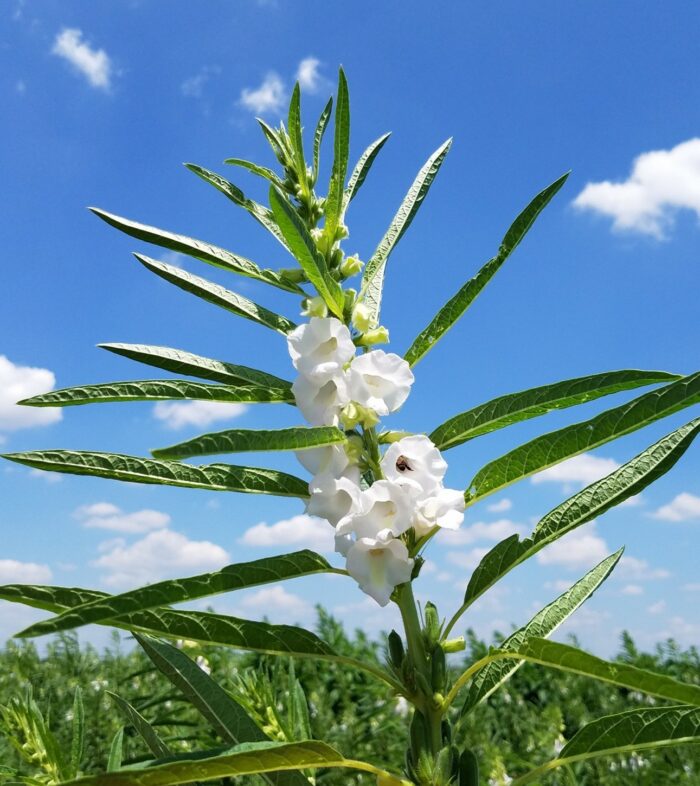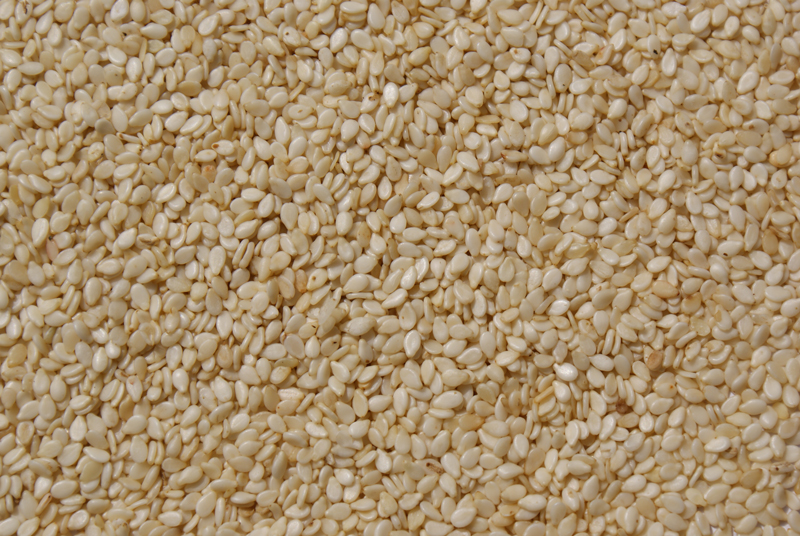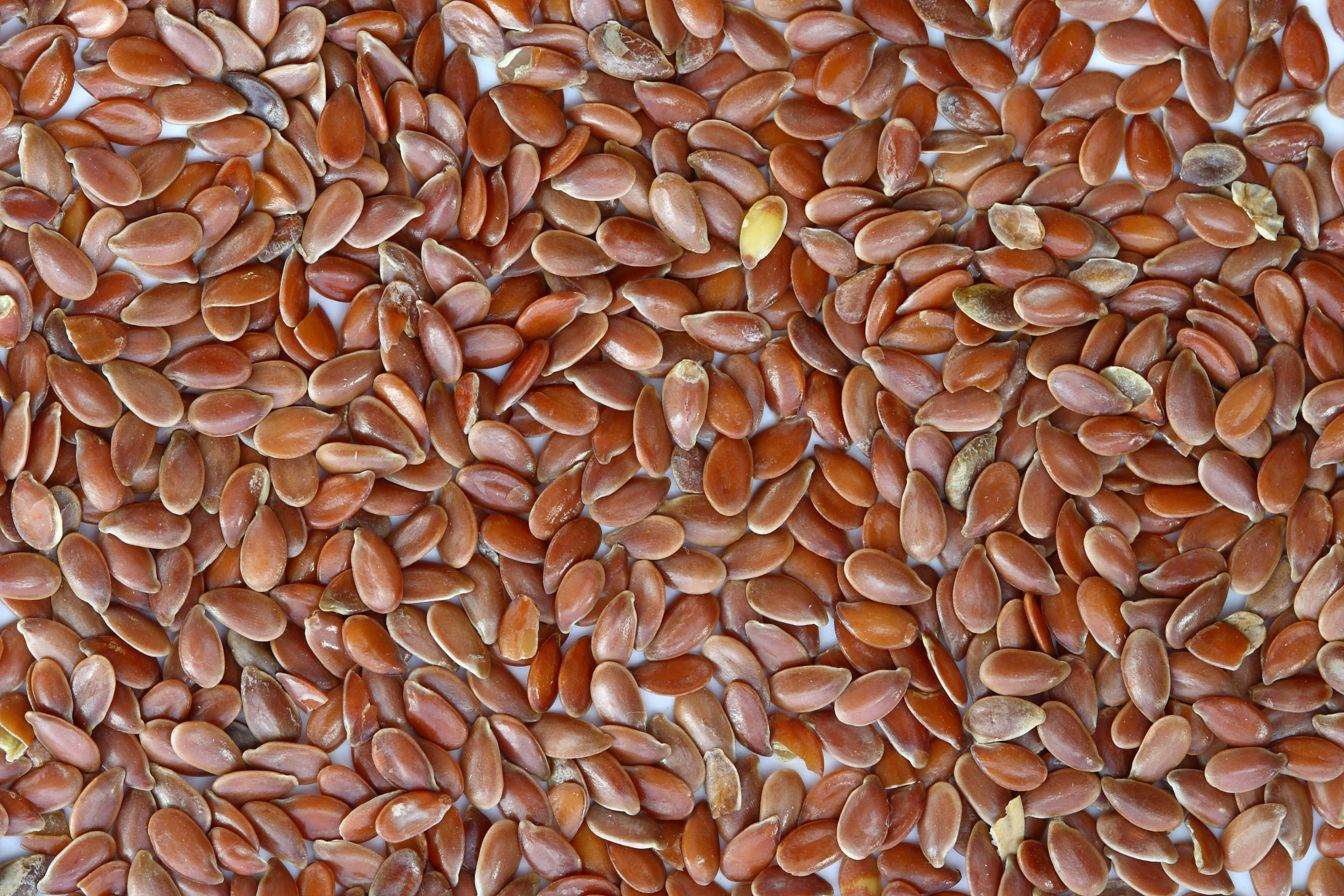
Picture courtesy: Derald Ray Langham (Sesame Research, LLC)
After finishing my B.Sc. degree at the Department of Chemistry (University of Khartoum, Sudan), I was very anxious to start a job. My dream was to work as a teacher in my own university but there was no way for that dream. So I decided to start to study for a master degree. The project I was given was “Seed Oils of Sesamum indicum, L. and Related Wild Species in Sudan“. During my M.Sc. studies, I was lucky to receive scholarships from the International Program in Chemical Sciences (IPICS) to do part of my studies at the Swedish University of Agricultural Sciences (SLU) in Uppsala, Sweden. I received my master degree from the University of Khartoum in 1990 and continued on the same project for Ph.D., with Prof. Lars-Ake Appelqvist as supervisor. I received my Ph.D. in January 1993. My research was very much encouraged and supported by Prof. Rune Liminga, director of IPICS at that time.
The main topic of my Ph.D. research was to investigate the furofuran lignan components in sesame oil from the only cultivated species Sesamum indicum L. (Family Pedaliacae) and develop methods for their structural analysis and quantification. We found a new lignan, episesalatin, from S. alatum. After that I performed a rat study on the effects of the sesamin, the main lignan in sesame oil, on the levels of vitamin E components in rats (8). Later, Marie Lemke-Norojärvi confirmed this effect in humans (12) and Ph.D. student Jan Frank showed that sesamin and gamma-tocopherol are metabolized by the same cytochrome P450 isozyme, whose inhibition by sesamin spares gamma-tocopherol from metabolic degradation (16, 25). Ph.D. student Ali Moazzami continued researching on sesame seed lignans and was able to identify and quantify a number of lignans establishing sesame seed as the richest plant source of lignans (17-21). Later, I was also engaged in research showing that sesame lignans might contribute to increasing the level of omega-3 fatty acids in small fish (26-28).
My work on sesame seeds and oils has opened for me many venues of research. One was about the complex structure of secoisolariciresinol diglucoside in flaxseed. It was known that this lignan exist in very high concentrations in flaxseed but as a polymeric structure. We were the first to find that this lignan forms a complex structure (molecular weight ca. 4000 Da) in which on average five secoisolariciresinoldiglucoside (SDG) residues are interconnected with four 3- hydroxy-3-methyl glutaric acid (HMGA) residues by the use of nuclear magnetic resonance spectroscopy (13). Two Ph.D. students, Christina Strandås and Pernilla Johnson, defended their Ph.D. theses on the structural characterization and properties of flaxseed lignans.


Publications
- Kamal-Eldin A., Yousif G., and Appelqvist L. Å. (1991) Thin-Layer Chromatographic Separations of Seed Oil Unsaponifiables from Four Sesamum Species. Journal of t he American Oil Chemists’ Society 68: 844–847. DOI: 10.1007/BF02660599
- Kamal-Eldin A., Yousif G., Appelqvist L. Å., and Iskander G. M. (1992) Seed Lipids of Sesamum indicum, L. and Related Wild Species in Sudan. 1. Fatty acids and Triacylglycerols. Journal of Fat Science and Technology 94: 254–259. DOI: 10.1002/lipi.19920940705
- Kamal-Eldin A., and Yousif G. (1992) A Furofuran Lignan from Sesamum alatum. Phytochemistry 31: 2911–2912. DOI: 1016/0031-9422(92)83664-K
- Kamal-Eldin A., Appelqvist Å., Yousif G., and Iskander G. M. (1992) Seed Lipids of Sesamum indicum, L. and Related Wild Species in Sudan: The Sterols. Journal of the Science of Food and Agriculture 59: 327–334. DOI: 10.1002/jsfa.2740590309
- Kamal-Eldin A., and Appelqvist Å. (1994) Variations in Fatty Acid Composition of the Different Acyl Lipids in Seed Oils from Four Sesamum species. Journal of the American Oil Chemists’ Society 71: 135–139. DOI: 10.1007/BF02541547
- Kamal-Eldin A., Appelqvist Å., and Yousif G. (1994) Lignan Analysis in Seed Oils from Four Sesamum species: Comparison of Different Chromatographic Methods. Journal of the American Oil Chemists’ Society 71: 141–147. DOI: 10.1007/BF02541548
- Kamal-Eldin A., and Appelqvist Å. (1994) Variations in the Composition of Sterols, Tocopherols and Lignans in Seed Oils from Four Sesamum species. Journal of the American Oil Chemists’ Society 71: 149–156. DOI: 10.1007/BF02541549
- Kamal-Eldin A., Pettersson D., and Appelqvist Å. (1995) Sesamin (a Compound from Sesame Oil) Increases Tocopherol Levels in Rats fed ad libitum. Lipids 30: 499–505. DOI: 10.1007/BF02537023
- Kamal-Eldin A., and Appelqvist Å. (1995) The Effects of Extraction Methods on Sesame Oil Stability. Journal of the American Oil Chemists’ Society 72: 967–969. DOI: 10.1007/BF02542076
- Kamal-Eldin A., Appelqvist Å., Gertz C., and Stier R. F. (1998) Enhancing the Frying Performance of High Oleic Sunflower Oil Using a Specially Manufactured Sesame Oil and Rice Bran Oil. Journal of Foodservice Systems 10: 139–156. DOI: 10.1111/j.1745-4506.1998.tb00147.x
- Johnsson P., Kamal-Eldin A., Lundgren N., and Åman P. (2000) HPLC Method for Analysis of Secoisolariciresinol Diglucoside in Flaxseeds. Journal of Agricultural and Food Chemistry 48: 5216–5219. DOI: 10.1021/jf0005871
- Lemke-Norojärvi , Kamal-Eldin A., Appelqvist L-Å., Dimberg L., Öhrvall, M., and Vessby, B. (2001) Corn and Sesame Oils Increase Serum g-Tocopherol Concentrations in Healthy Swedish Women. The Journal of Nutrition 131: 1195–1201. DOI: 10.1093/jn/131.4.1195
- Kamal-Eldin A., Peerlkamp N., Johnsson , Andersson R., Andersson R. E., Lundgren L. N., and Åman P. (2001) An Oligomer from Flaxseed Composed of Secoisolariciresinoldiglucoside and 3- Hydroxy-3-Methyl Glutaric Acid Residues. Phytochemistry 58: 587–590. DOI: 10.1016/S0031-9422(01)00279-5
- Eliasson C., Kamal-Eldin A., Andersson R., and Åman (2003) HPLC Analysis of Secoisolariciresinol Diglucoside and Hydroxycinnamic Acid Glucosides in Flaxseed by Alkaline Extraction. Journal of Chromatography A. 1012: 151–159. DOI: 10.1016/S0021-9673(03)01136-1
- Frank J., Eliasson C., Leroy-Nivard D., Budec A., Lundh T., Vessby B., Åman P., and Kamal-Eldin A. (2004) Dietary Secoisolariciresinoldiglucoside and Its Oligomers, Isolated from Flaxseed, Lower Vitamin E Levels in Rats. British Journal of Nutrition 92: 169–176. DOI: 1079/BJN20041154
- Frank, J., Kamal-Eldin, A., Traber, G. (2004) Consumption of Sesame Oil Muffins Decreases the Urinary Excretion of g-Tocopherol Metabolites in Humans. Annals of New York Academy of Sciences 1031: 365–367. DOI: 10.1196/annals.1331.046
- Moazzami, A., Andersson, R. E., and Kamal-Eldin, A. (2006) HPLC Analysis of sesaminol Glucosides in Sesame Seeds. Journal of Agricultural and Food Chemistry 54: 633–638. DOI: 1021/jf051541g
- Moazzami, A., Andersson, R. E., and Kamal-Eldin, A. (2006) Characterization and Analysis of Sesamolinol Diglucoside in Sesame Seeds. Bioscience, Biotechnology and Biochemistry 70: 1478–1481. DOI: 1271/bbb.60013
- Moazzami, A., and Kamal-Eldin, A. (2006) Sesame Seed Is A Rich Source of Dietary Lignans. Journal of the American Oil Chemists’ Society 83, 719–723. DOI: 1007/s11746-006-5029-7
- Moazzami, A., Andersson, R. , and Kamal-Eldin, A. (2007) Quantitative NMR Analysis of Sesamin Catechol Metabolite in Human Urine. Journal of Nutrition 137: 940–944. DOI: 10.1093/jn/137.4.940
- Moazzami, A., Haese, , and Kamal-Eldin, A. (2007) Lignan Content in Sesame Seeds and Products. European Journal of Lipid Science and Technology 109: 1022–1027. DOI: 10.1002/ejlt.200700057
- Moazzami, A., Frank, J., Lundh, T., Vessby, B., and Kamal-Eldin, A. (2007) Dietary Phytosterols Inhibit the Lipid Modulating Effects of Sesamin in Rats. Current Topics in Nutraceutical Research 5: 93–98.
- Strandås, C., Kamal-Eldin, A., Andersson, R., and Åman, (2008) Composition and Properties of Flaxseed Phenolic Oligomers. Food Chemistry 110: 106–112. DOI: 10.1016/j.foodchem.2008.01.064
- Strandås, C., Kamal-Eldin, A., Andersson, R. & Åman, (2008) Phenolic Glucosides in Bread with Flaxseed. Food Chemistry 110: 997–999. DOI: 10.1016/j.foodchem.2008.02.088
- Frank, J., Lee, , Leonard, S. W., Atkinson, J. K., Kamal-Eldin, A., and Traber, M. G. (2008) Sex Differences in the Inhibition of g-Tocopherol Metabolism by a Single Dose of Dietary Sesame Oil in Healthy Subjects. American Journal of Clinical Nutrition 87: 1723–1729. DOI: 10.1093/ajcn/87.6.1723
- Trattner, , Kamal-Eldin A., Brännäs E., Moazzami A., Zlabek V., Larsson P., Ruyter B., Gjøen T., and Pickova. J. (2008) Sesamin Supplementation Increases White Muscle Docosahexaenoic Acid (DHA) Levels in Rainbow Trout (Oncorhynchus mykiss) Fed High alpha-Linolenic Acid (ALA) Containing Vegetable Oil: Metabolic Actions. Lipids 43: 989–997. DOI: 10.1007/s11745-008-3228-8
- Trattner, , Ruyter B., Østbye, T. K., Gjøen T., Kamal-Eldin A., and Pickova. J. (2008) Sesamin Increases alpha-Linolenic Acid Conversion to Docosahexaenoic Acid in Atlantic Salmon (Salmo salar L.) Hepatocytes: Role of Altered Gene Expression. Lipids 43: 999–1008. DOI: 10.1007/s11745-008-3229-7
- Trattner, S., Ruyter, B., Ostbye, T. K., Kamal-Eldin, A., Moazzami, A., Pan, J., Gjoen, T., Brannas, E., Zlabek, , and Pickova, J. (2011) Influence of Dietary Sesamin on Fatty Acids and Expression of Some Lipid Regulating Genes in Baltic Atlantic Salmon (Salmo salar L.) Juveniles. Physiological Research 60: 125-137. DOI: 10.33549/physiolres.932068
- Moazzami, A., and Kamal-Eldin, A. (2009) Sesame Seed Oil, Chapter 8, in: Gourmet and Health- Promoting Oils, A. R. Moreau and A. Kamal-Eldin (Editors), AOCS Press, Champaign, Illinois, 267–282.
- Kamal-Eldin, A. (2011) Chemical Studies on the Lignans and Other Minor Constituents of Sesame Seed Oil, Chapter 3, in: Sesame: The Genus Sesamum, D. Bedigian (Editor), Taylor & Francis, USA, pp. 79-
